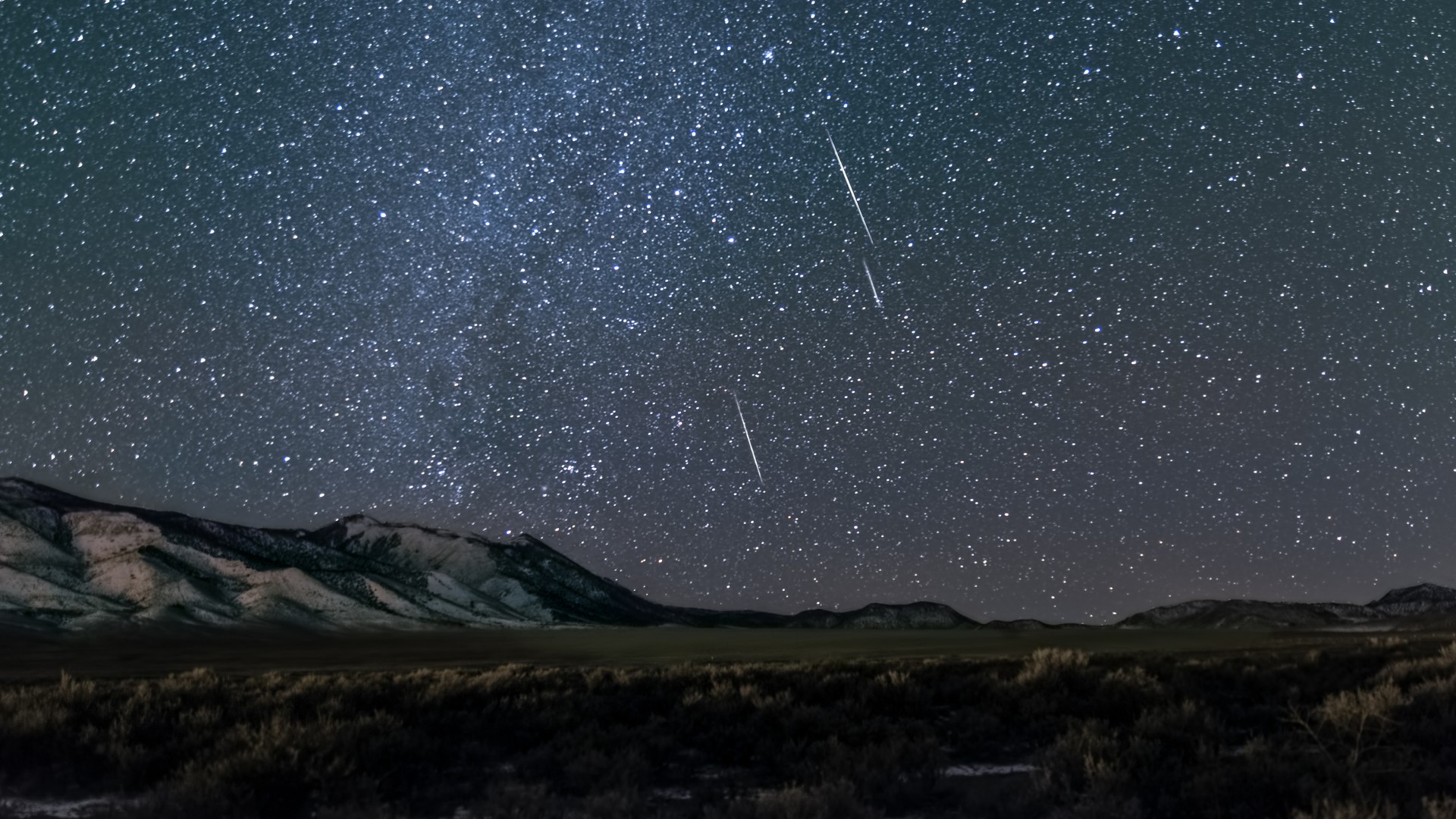
The Geminid meteor shower of 2023 is here, and it looks to be one of the year's best celestial fireworks displays.
Thanks to a dark one-day old new moon and generally favorable weather conditions throughout the United States, tonight looks like a great night to catch the peak of this annual meteor shower. Skywatchers in areas with dark skies could see as many as 100 meteors per hour, according to SpaceWeather.com.
If you are unable to brave the cold or don't have clear skies, you can still catch the Geminid meteor shower tonight thanks to free online livestreams hosted by the Slooh telescope network and the Virtual Telescope Project in Rome, Italy.
Related: Meteor showers 2023: When is the next one?
Slooh robotic telescopes
The Slooh robotic telescope network is hosting a free livestream of the Geminid meteor shower beginning at 5:30 p.m. EST (2230 GMT) on Thursday (Dec. 14).
Slooh operates a network of telescopes in Chile and the Canary islands. The organization hosts livestream webcasts such as this one and also allows users to rent time on their telescopes.
Virtual Telescope Project
The Virtual Telescope Project is operated by astronomer Gianluca Masi. Tonight (Dec. 13), Masi will host a livestream of the Geminid meteor shower beginning at 6 p.m. EST (2300 GMT).
"This year, the moon will be new, so not visible in the sky, offering the best, darkest conditions for a memorable experience. We can expect about 100 meteors per hour," Masi writes on the project's website.
The project will host a second livestream of the meteor shower on Thursday (Dec. 14) beginning at the same time.

There's are so many stunning sights to see in the night sky. If you need a telescope, we recommend the Celestron Astro Fi 102 as the top pick in our best beginner's telescope guide.
The Geminid meteor shower gets its name from the Gemini constellation, the area in the sky from which the meteors appear to originate (also called its radiant point). The Geminids are noteworthy in that, unlike other meteor showers, they are created not by debris from a comet but by leftovers of 3200 Phaëthon, an Earth-crossing Apollo asteroid with an orbit that brings it closer to the sun than any other named asteroid.
If you hope to take some of your own photographs of the Geminids or any other meteor shower, be sure to check out our how to photograph meteors and meteor showers guide. And if you need imaging gear for the next big celestial spectacle, consider our best cameras for astrophotography and best lenses for astrophotography.
Editor's note: If you snap a great photo of the Geminid meteor shower that you'd like to share with Space.com and our news partners for a story or image gallery, send images and comments to spacephotos@space.com.







